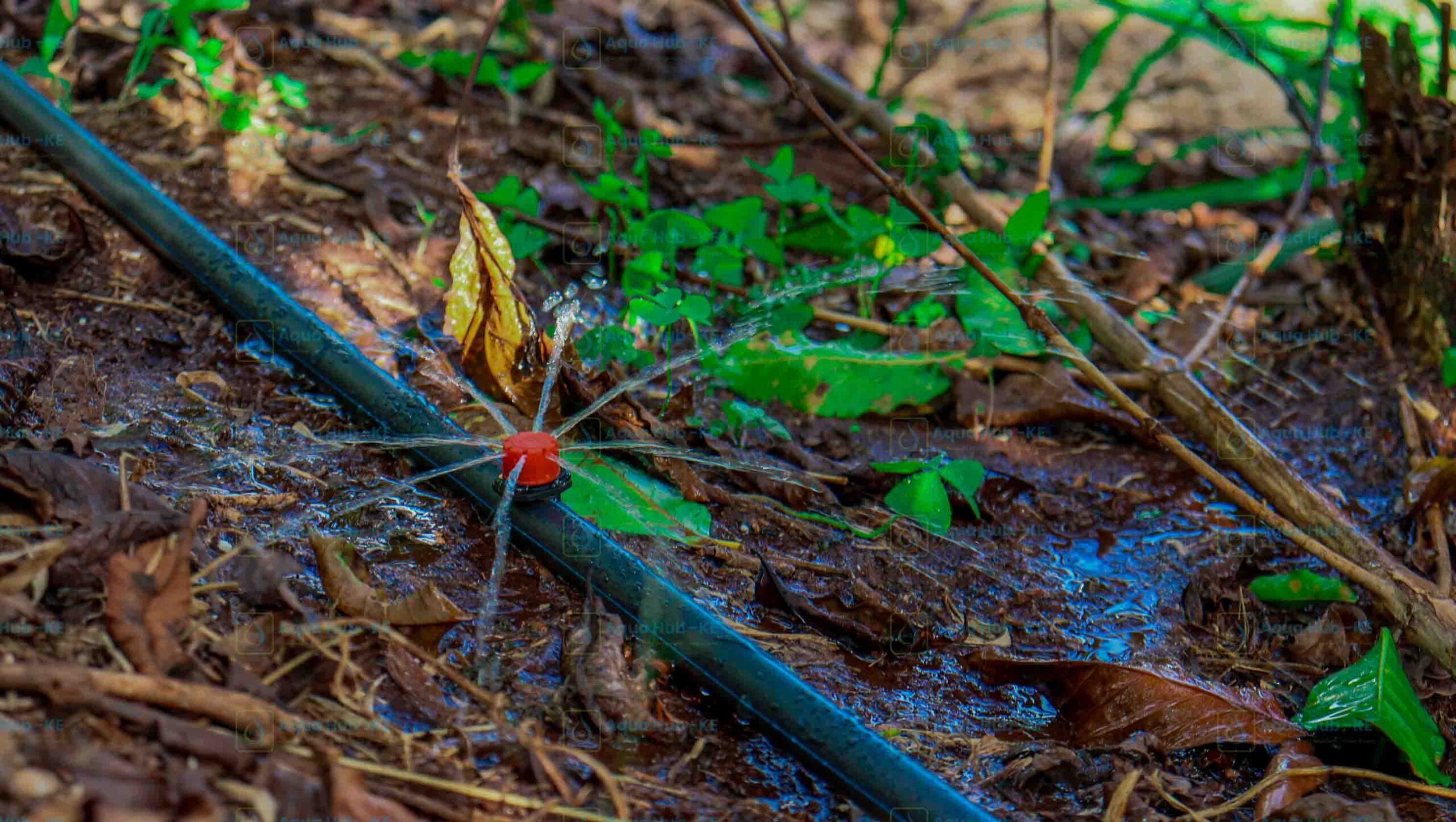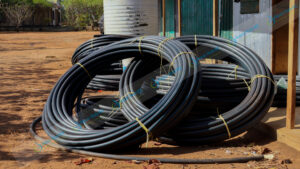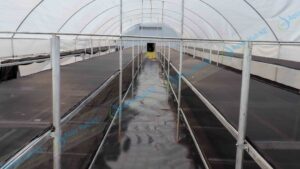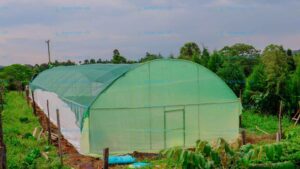Irrigation systems vary when it comes to suitability to crops, soil conservation, water usage, cost of running and overall sustainability. At Aqua Hub LTD, we work with our clients to ensure they end up with the right irrigation system. That means that you will water your crops efficiently using less water, spend less on inputs and overall running costs.
In this article, you will learn the best irrigation options, their costs, advantages and disadvantages to help you decide on the right one for you.
Why Sustainable Irrigation Matters
The major setback in agriculture is the water scarcity, that has been a challenge for decades. Even though, Kenya receives rainfall in the tropical regions, climate change has led to increase in drought periods which is a threat to crop production. Sustainable irrigation therefore is no longer an option but rather an essential to boost crop farming in low rainfall regions.
The target of modern irrigation solutions is to ensure.
- Less water is used to grow crops in a season.
- Harvest and crop quality is consistent even during dry conditions.
- Soil erosion is mitigated
- Zero soil degradation and leaching
- The environment is safe from soil and water pollution from fertilizers and pesticide use.
Which is the Right Irrigation System for You?
Drip Irrigation (Micro‑irrigation)
How it works: Delivers water directly at the plant root, uses about 30 – 40 % of water compared to sprinklers.
Components: Includes drip tapes/pipes, filters, regulators, main and sub‑mains, and emitters.
Types: Single or double‑emitter lines; button drippers ideal for tree crops.
Crop suitability:

- Vegetables (tomatoes, cabbage, lettuce, Kales): typically, 2 drip lines per bed
- Onions, garlic, strawberries: tight spacing often 3 lines per bed
- Tree crops (avocado, pawpaw, coffee): button drippers, often 1 line per plant or per short bed
Cost of Drip Irrigation per acre
- 1 line/bed: ~KES 75 000–85 000
- 2 lines/bed: ~KES 130 000–160 000
- 3 lines/bed (for onions, garlic): ~KES 160 000–190 000.
- Smaller farm sizes scale proportionally: e.g. ¼‑acre at ~KES 28 000–40 000 depending on number of lines.
Pros:
- High water savings
- Increased crop yields
- Targeted fertiliser application
Cons:
- Higher initial capital outlay
- Needs good filtration and periodic maintenance
Sprinkler / Overhead Systems
Simulates rainfall and works well on uneven terrain.
Common types in Kenya include impact sprinklers, mega‑net, micro‑sprinklers, rain guns, butterfly mini‑sprinklers, and pop‑up heads.
Crop suitability: leafy vegetables, maize, rice, sugar cane, forage crops, carrots, cassava.
Cost of Sprinkler Irrigation per acre:
- Impact or mega‑net: KES 50 000/acre
- Rain gun systems: KES 65 000/acre
- Micro / butterfly sprinklers (orchards, gardens): KES 85 000/acre
- Pop‑up systems (lawns, high-end gardens): KES 120 000/acre.
Pros:
- Good for larger, uneven plots
- Flexible across many crops
Cons:
- Less water‑efficient than drip (approx. 60–70% efficient)
- More evaporation and wind drift
Surface / Flood / Furrow Irrigation
- Lowest cost, traditional method: channels water across furrows or basins.
- Best for: rice paddies, potatoes, wheat, and crops tolerant of surface wetting
- Efficiency drawback: high evaporation and runoff; requires large water volume.
- Not ideal in water-scarce areas.
Other Alternative Right Irrigation System | Affordable
- Alternate Wetting and Drying (AWD): for lowland rice. Allows fields to dry to about 15 cm before re-flooding, conserving water and reducing emissions.
- Wicking beds: use buried water reservoirs and capillary action to supply plant roots—ideal for kitchen gardens and small plots, with 50–80% water savings.
- Subsurface Textile Irrigation (SSTI): permanent below-ground systems that reduce water use by 50–75%, minimize evaporation and weeds, and support fertigation. Best for high-value perennial crops.
3. Crop‑Specific Recommendations
| Crop Type | Recommended System | Water Use Efficiency | Typical Cost/acre (KES) |
| Tomatoes, cabbage, Sukuma wiki, green beans | Drip (2 lines/bed) | Very high | 130 000–155 000 |
| Onion, garlic, strawberries | Drip (3 lines/bed) | Highest | 160 000–190 000 |
| Tree crops (avocado, coffee, pawpaw) | Button drip/tree drippers | Very high | 70 000–85 000 |
| Maize, sugar cane, rice, carrots | Sprinkler (rain gun / impact) | Moderate | 50 000–65 000 |
| Pasture / animal feeds | Sprinkler or rain hose | Moderate | 50 000–85 000 |
| Rice (paddy lowland) | AWD (flood + monitoring tube) | Water-saving adaptation | 20,000 – 25,000 |
| Small urban/kitchen plots | Wicking bed or small drip | High (50–80% saving) | 5 000–30 000 |
Costs & Implementation : Choosing the Right Irrigation System
What affects the total cost of Irrigation Systems?
- Farm size – ¼, ½, 1 acre, or larger
- Number of drip lines per bed, based on crop
- Pipe quality – HDPE vs PVC, pressure‑compensating lines
- Water source and pump – gravity vs pump (electric, solar, diesel)
- Filters and fittings to prevent emitter clogging
- Installation and training – supplier support often includes training.
Example: Tomato farm (1 acre)
- 2 drip lines/bed → kit cost ≈ KES 130 000 (including installation).
- Add a solar pump and storage tank: another KES 100 000–200 000 depending on capacity.
- With training and agronomy support, annual recurring cost is minor compared to yield gains.
Example: Onion farm (½ acre)
- Drip irrigation (3 lines): ~KES 71 000 (½‑acre 3‑line kit).
- System might double yield and reduce fertiliser loss
- Return on investment possible in one season.
Sustainable Water Sources for Irrigation
- Water pans: lined storage ponds harvesting rainwater, with ~100,000 L capacity, enable multiple harvests and major income improvements.
- Sand dams: trap runoff to feed groundwater, boosting year-round access and improving livelihoods in arid zones.
- Boreholes: drilled in ground surfaces with water or aquifers in underlying layers of rocks. Could be expensive but worth the returns and provides water for irrigation often harnessed in water tanks.
Maintenance & Tips for Longevity
- Regular filter cleaning: essential for drip and micro‑sprinkler systems.
- Flush lines periodically to prevent sediment build-up.
- Check emitters and pipes for blockages or leaks.
- Monitor soil moisture manually or using moisture sensors.
- Flush the irrigation system occasionally to avoid salt accumulation.
- Seasonal check-ups and renew filters and test pressure regulators.
7. Step‑by‑Step Guide on How to choose the Right Irrigation System
- Assess your water source: river, borehole, rainwater pan, or mains?
- Define your crop type and planting density – vegetables, trees, staples.
- Match system to crop – drip for high‑value, water‑efficient crops; sprinklers for large acres of land.
- Research on cost range based on acreage and lines per bed (see tables above).
- Consider pumps and storage infrastructure – gravity vs powered, solar options.
- Engage a trusted supplier – for instance Aqua Hub LTD for help in installation and training support.
- Factor in longer‑term benefits: yield gain, fertilizer savings, water use reduction.





